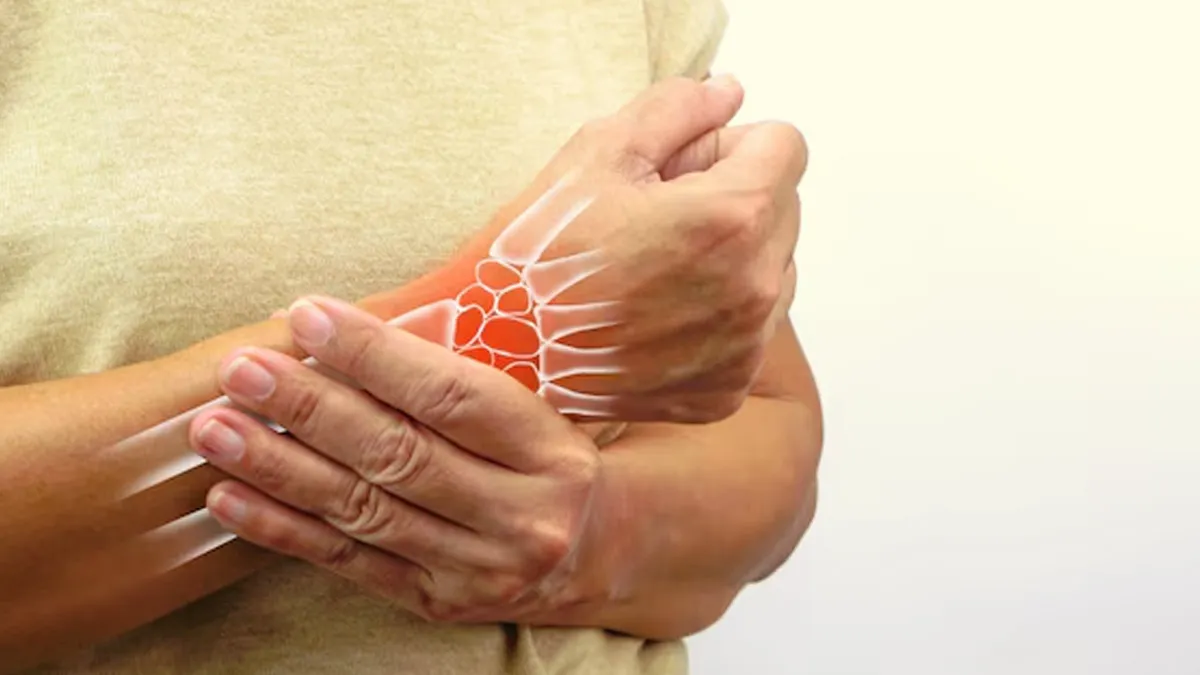
Have you ever gotten out of bed with sore joints, wondering whether it's just a bad night's sleep or something else? For many, these initial signs are ignored until the pain becomes a daily struggle. Rheumatoid arthritis is an autoimmune condition that causes the body's immune system to attack the joints, causing pain, stiffness, and swelling. As time goes by, it gets worse, causing joint damage and mobility impairment.
Table of Content:-
We spoke to Dr Venkatesh Movva, Regenerative and Sports Medicine Specialist and Founder, RegenOrthoSport, Hyderabad, who explained the four stages of rheumatoid arthritis and how it progresses.
The Johns Hopkins Arthritis Center states that rheumatoid arthritis usually progresses through periods of heightened disease activity, known as flare-ups. As time passes, these flare-ups tend to last longer and become more difficult to manage.
Stages Of Rheumatoid Arthritis
Stage 1: Early Inflammation Begins

"During the initial phase, the immune system mistakenly targets the synovium, which is the thin lining of the joint. This leads to inflammation, causing the joint to stiffen, swell, and cause pain at times. The subtle nature of symptoms goes unnoticed by most individuals, and thus, diagnosis is delayed," explained Dr Movva.
Early Symptoms to Look Out For
- You may experience mild pain and stiffness, especially in the morning
- You may have swelling in small joints like fingers and toes
- There may be occasional fatigue or low-grade fever
How to Manage It
To alleviate swelling, doctors usually recommend the use of anti-inflammatory medications. Maintaining a healthy diet while engaging in low-impact activities, such as yoga or swimming can help maintain range of motion. Moreover, getting medical attention as early as possible is crucial to decelerate the progress of the disease.
Stage 2: Cartilage Starts to Wear Down

"If left untreated, rheumatoid arthritis moves into the second stage, where inflammation becomes more aggressive. The cartilage, which cushions between the bones, starts to break down. As a result, joint movement becomes more painful and limited," added Dr Movva.
How This Stage Affects You
- Increased joint stiffness that lasts for hours
- Swelling and warmth in the affected joints
- Weakness and reduced range of motion
Steps to Slow Progression
Along with prescribed medications, doctors may recommend physical therapy to strengthen the muscles around the joints. This helps reduce inflammation and support joint function.
Also Read: Travelling With Rheumatoid Arthritis? Here Are Things To Remember For A Pain-Free Trip
Stage 3: Joints Begin to Deform

"At this stage, rheumatoid arthritis begins severely damaging the bones and cartilage. The joints become deformed and lose their usual shape, and simple actions like gripping, walking, or even bending your fingers become impossible," said Dr Movva.
Warning Signs of Severe Damage
- Severe pain, even at rest
- Visible joint deformities (fingers bending unnaturally)
- Increased difficulty in performing daily tasks
Treatment Approaches at This Stage
Stronger medications or targeted therapies may be required to control inflammation. Some patients may need braces or mobility aids to support joint function.
Stage 4: Severe Joint Damage and Loss of Function

In the final stage, the joints are so damaged that movement becomes extremely limited or impossible. The inflammation may subside, but by this point, the joint destruction is irreversible.
How This Impacts Daily Life
- Extreme pain and stiffness, even when not moving
- Complete loss of joint function in affected areas
- Dependence on assistive devices like braces or wheelchairs
Available Options
Surgery, such as joint replacement, becomes the primary option when all other treatments fail. However, early intervention with medical treatments and supportive therapies can delay or even prevent the need for surgery.
Also Read: Why Women Are More Prone To Arthritis: Expert Explains The Role Of Hormones And Genetics
How Regenerative Medicine Supports Joint Health
Though medical treatment under a rheumatologist is needed for rheumatoid arthritis, chronic inflammation-induced joint arthritis can be treated with regenerative therapies. Several advanced regenerative therapies, such as Bone Marrow Aspirate Concentrate (BMAC) can also restore joint functionality and retard cartilage loss. This therapy works on eliminating inflammation and aiding in the body's natural healing.
Dr Movva explains, "While regenerative medicine does not directly treat rheumatoid arthritis, it plays a valuable role in preserving joint health and preventing long-term damage. Patients should consult a rheumatologist for primary rheumatoid arthritis treatment and consider regenerative therapies as a supportive approach."
Why Early Diagnosis and Treatment Matter
Dr Movva emphasises that rheumatoid arthritis does not necessarily have to be in its last stage if treated early. Medication, physical therapy, and regenerative therapies can all contribute to slowing it down.
He concluded, "The earlier we intervene, the better the outcome. With the right treatments, many people can delay or even avoid joint damage, maintaining mobility for years. If you’re experiencing persistent joint pain and stiffness, don’t ignore it. A timely visit to a specialist can help you take control of your joint health before the condition worsens."
[Disclaimer: This article contains information provided by an expert and is for informational purposes only. Hence, we advise you to consult your professional if you are dealing with any health issue to avoid complications.]
Also watch this video
How we keep this article up to date:
We work with experts and keep a close eye on the latest in health and wellness. Whenever there is a new research or helpful information, we update our articles with accurate and useful advice.
Current Version